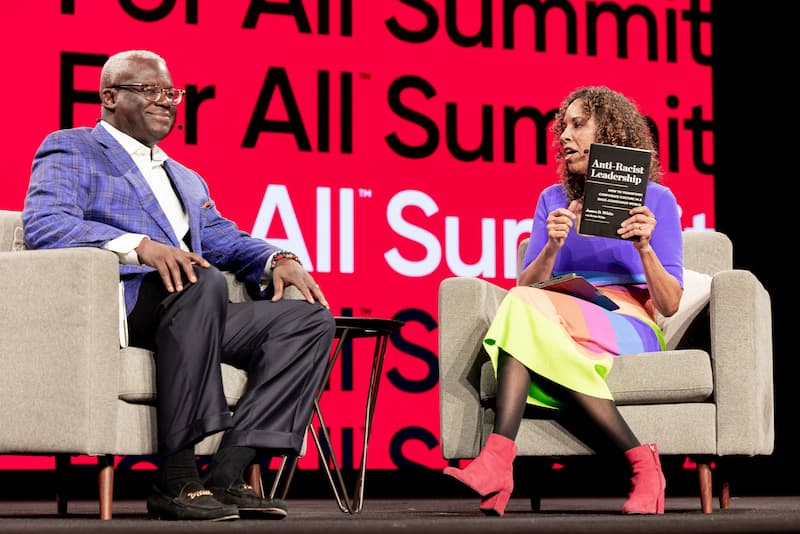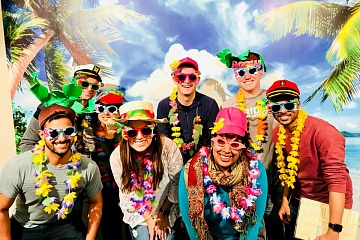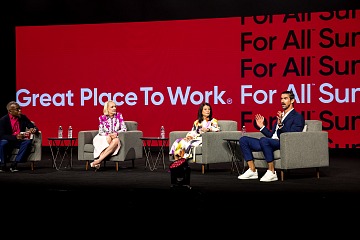
More than 1,200 attendees traveled from across the world to attend the For All™ Summit to learn how organizations have embraced empathy and understanding for employees during a tumultuous two years.
Energy costs are rising. Inflation. War. As all of us know, things have changed a lot for leaders and employees in the business world, both personally and professionally since the start of the year.
But at the 18th annual Great Place To Work® For All Summit, speakers addressed that in the midst of chaos, it’s essential to put employees first — and how doing so can improve an organization’s business.
“It’s easy for us to put people issues on the backburner — and deal with it when things get better,” said Julian Lute, senior strategic advisor at Great Place To Work, to kick off the event on Tuesday, Oct. 12. “But we know that things don’t get better until people get better. We need committed, capable and bold leaders because ‘For All’ matters now more than it ever has before.”
The future of work is not clickbait
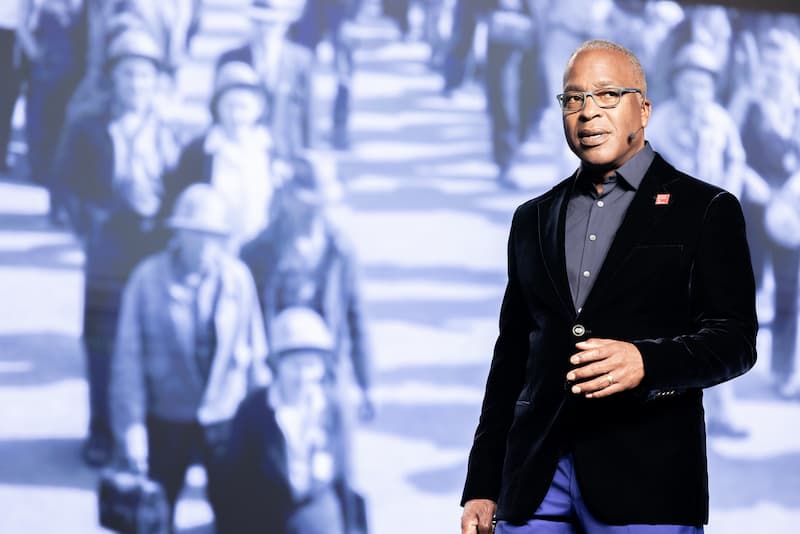
The opening keynote from Michael C. Bush, chief executive officer at Great Place To Work, was candid and personal, and included everything from the Great Migration, stories about his childhood, and his relationship with his father to the murder of George Floyd, and the world he imagines for his grandson.
And of course — a topic near-and-dear to his heart — work. He even showed a picture of himself as a toddler, on top of tractor, doing work at his family’s farm in Georgia.
“If it’s not personal, you’ll never achieve your purpose. I love this quote,’” Bush said. “You know who said it? Me. Today."
"The future of work is not clickbait. It's not one of those words you drop in there so a lot of people will read your article," he said. "The future of work is for all, and that's why we're here."
Businesses have to improve their productivity, performance, rate of innovation and decrease their carbon footprint.
"These are very, very difficult things to do," Bush said. "That's why the future of work is for all or your business is going to get smaller."
Speaking of innovation, Bush shared an initiative that he and leaders from 11 companies are working on called “The Great Transformation,” a first-of-its-kind initiative around innovative diversity, equity, inclusion and belonging programs. Members include Accenture, Cadence, Cisco, DHL Express, Dow, Encore, Hilton, KPMG, Synchrony, UKG, and World Wide Technology.
“If it’s not personal, you’ll never achieve your purpose." — Michael C. Bush
Be ready to respond to a crisis
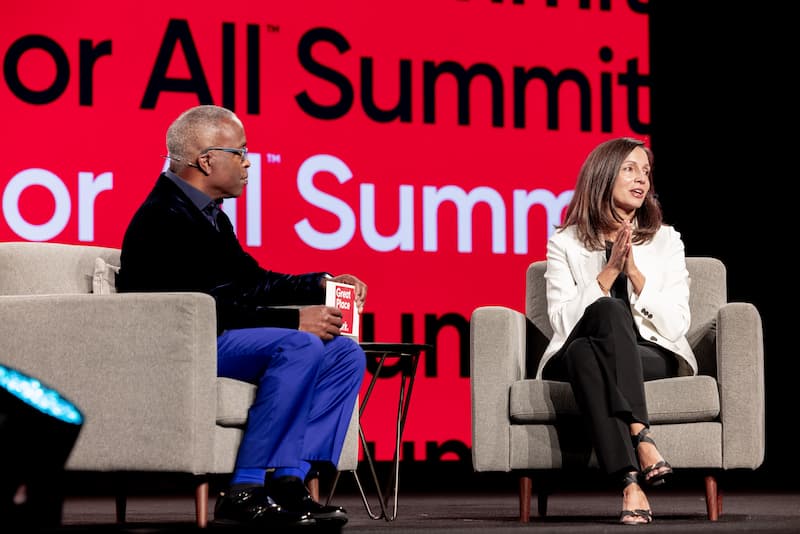
In the early days of the pandemic, Laura Fuentes, executive vice president and chief human resources officer at Hilton, was in daily crisis calls with senior leadership.
One Saturday, the team was tasked with figuring out how to offer a million rooms to medical heroes. Two days later, they turned the request into a reality.
“This was a moment where we needed to help and to do it fast,” Fuentes said. “We wanted to be part of the solution. Crisis doesn’t just build character, it reveals it.”
Providing these rooms during the pandemic aligned with the company’s values, Fuentes said.
“Our employees want to be seen, welcomed and feel a sense of belonging,” she said. “They want to take care of their families and themselves. They want to reach their full potential and align with an organization that matches their values and purpose. Our people are not statistics — they are stories and souls who deserve to be promoted and lead.”
Why investing in your people boosts your bottom line
Brian Cornell, board chairman and chief executive officer at Target, the No. 1 on the PEOPLE® Companies That Care list, described the blueprint of its culture:
• Caring is the foundation
• Encourage personal development
• Win together as a team
“No matter what store a person works in, we’re a big family,” said Cornell. “We look out for each other.”
In 2017, Cornell announced that he wanted the board to invest $1 billion of operating income into team members. Initiatives included lifting the minimum wage to $15 an hour to allocating even more money in its debt-free educational assistance program. In addition, Target will invest $2 billion by 2025 in Black-owned companies to feature merchandise and products throughout its stores.
Define the purpose of your office
PwC doesn’t mandate that employees come into the office. It aims to inspire people to make connections in the office or virtually. Kimberly Jones, talent strategy and people experience leader, and Christina Ballantine, director of hybrid work strategies, explained how they did it:
• Refitted its office space. They ditched the cubicles and enclosed offices for open workspaces and glass offices that offer transparency and openness.
• Focused on fun. The team created events and activities to foster connectivity to get people excited about coming into the office.
• Created educational events. Each year, the company hosts five webcasts to bring people together to discuss leadership opportunities. Mike Krzyzewski (“Coach K”), former basketball coach from Duke University, led one recently.
• Stopped bringing a box of donuts into a conference room if half of the staff is attending the meeting virtually. Why? It just makes remote employees feel left out —and hungry.
Build a mentorship program
As money gets tighter and inflation goes higher, companies still want to do amazing things for their employees, but are faced with smaller budgets.
A team of leaders from Cadence shared how it started a mentorship program with limited resources. Does your HR team want to try something similar? Here’s how:
1. Find a business leader to amplify your efforts. For example, Cadence invited an executive sponsor from the management team to listen to how they were planning the mentorship program. This executive offered advice and ideas on how to turn the program into something the executive audience would understand.
2. Rehearse your pitch. “Be the other person you’re talking to,” said KT Moore, vice president, product marketing and business development, ERG lead. “Get the conversation going in your mind. What would the CEO say to me when I present this idea?”
3. Market the program. It’s important to make sure the mentorship program has a proper rollout. Encourage managers to ask their staff if they are taking advantage of it. “And put the success stories of these relationships on your company’s Intranet,” said Tina Jones, senior vice president, global human resources.
4. Set a structure. Define the role of both mentor and mentee. Cap the time, too — Cadence’s program is 30 minutes a month for six months.
5. Take a bow. So much work that HR does is behind-the-scenes. “But don’t be afraid to claim credit for what you’ve done,” Jones said. “People want to hear what you’ve done, both internally and externally.”
Learn More
For more advice on diversity in the workplace and content from our For All™ Summit and beyond, sign up for our newsletter.




